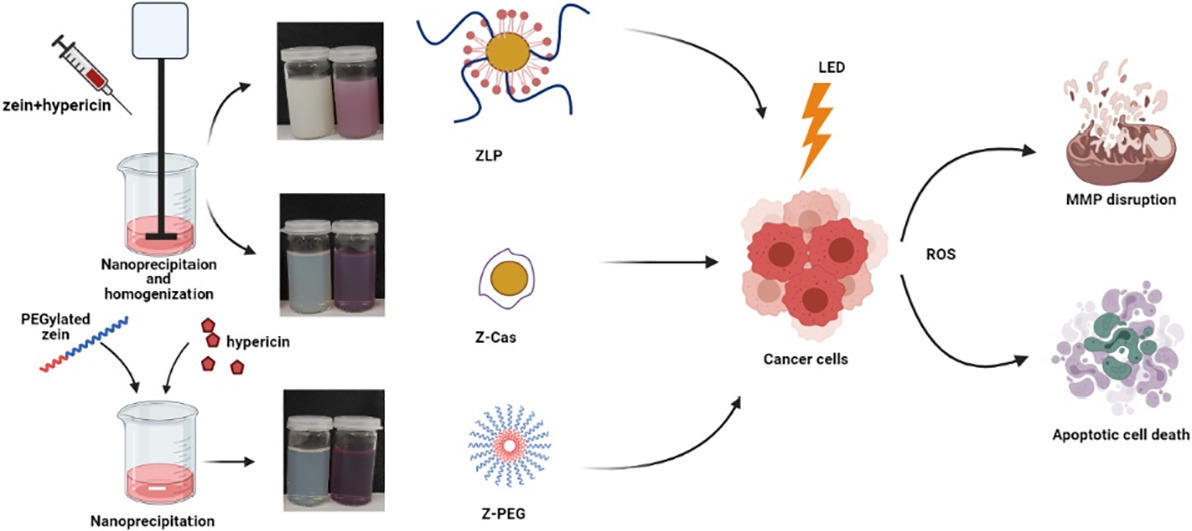Surface tailored zein as a novel delivery system for hypericin: Application in photodynamic therapy

Zein is an FDA-approved maize protein featured by its manipulative surface and the possibility of fabrication into nanomaterials. Although extensive research has been carried out in zein-based technology, limited work is available for the application of zein in the field of cancer photodynamic therapy (PDT). In this work, we report zein as a carrier for the natural photosensitizer hypericin in the PDT of hepatocellular carcinoma in vitro.
Highlights
Zein is a unique plant protein that could be employed as drug carrier for photosensitizers in photodynamic therapy of cancer.
Stability of zein in aqueous buffers and serum could be enhanced by either chemical or physical coating of zein with biocompatible polymers.
The photodynamic applicability of surface modified zein as delivery system for hypericin is a promising approach to overcome the lower solubility of hypericin in aqueous environment.
The cellular uptake and phototoxicity of hypericin was enhanced by encapsulation into several surface coated zein formulations.
Zein was modified through chemical PEGylation to form PEGylated zein micelles that were compared with two zein nanoparticle formulations physically stabilized by either the lecithin/pluronic mixture or sodium caseinate. FT-IR, 1HNMR and HP-SEC MALS approaches were employed to confirm the chemical PEGylation of zein. Our developed zein nanoparticles and micelles were further characterized by photon correlation spectroscopy (PCS) and atomic force microscopy (AFM). The obtained results showed relatively smaller sizes and higher encapsulation of hypericin in the micellar zein than the nanoparticle-based formulations. Phototoxicity on hepatocellular carcinoma (HepG2 cells) manifested a dose-dependent toxicity pattern of all designed zein formulations.
However, superior cytotoxicity was prominent for the hypericin-based micelles, which was influenced by the higher cellular uptake profile. Consequently, the treated HepG2 cells manifested a higher level of intracellular generated ROS and disruption of mitochondrial membrane potential, which induced apoptotic cell death. Comparatively, the designed hypericin formulations indicated lower phototoxicity profile in murine fibroblast L929 cells reflecting their safety on normal cells. Our investigations suggested that the surface-modified zein could be employed to enhance the delivery of the hydrophobic hypericin in PDT and pave the way for future in vivo and clinical applications in cancer treatment.
Article information: Ahmed M. Abdelsalam, Ahmed Somaida, Ghazala Ambreen, Abdallah M. Ayoub, Imran Tariq, Konrad Engelhardt, Patrick Garidel, Ibrahim Fawaz, Muhammed U. Amin, Matthias Wojcik, Udo Bakowsky, Surface tailored zein as a novel delivery system for hypericin: Application in photodynamic therapy, Materials Science and Engineering: C, 2021. https://doi.org/10.1016/j.msec.2021.112420.

